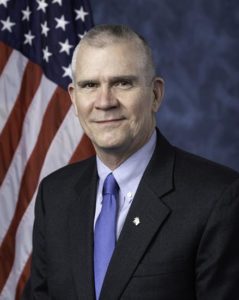WASHINGTON — The VA’s plans to use money left over from another fund to increase its information technology budget has raised concerns among some members of Congress.
Legislators expressed concern about VA’s intentions to partially fund its IT budget from a pool of money left from the Transformation Fund, which came in under budget. The $679 million the department plans to take from that fund would bring VA’s total IT budget for FY 2022 to $5.5 billion—a 12% increase from 2021’s $4.9 billion.
Five years ago, as part of the Consolidated Appropriations Act of 2016, Congress gave VA the authority to dip into the TF to supplement IT needs, as well as to fund facility infrastructure improvements. Congress put a five-year wait on the implementation, making this year the first opportunity VA has to use that authority.
Now that VA has the power to dip into its unused funds, legislators said they are worried that the agency will be able to bypass the Congressional appropriation process, and that it might be incentivized to purposefully go under-budget on projects to ensure the TF has enough extra money to fund its IT needs.
During a hearing of the House VA Technology Modernization Subcommittee, ranking Republican Rep. Matt Rosendale (R-MT), called the TF an “opaque, uncertain slush fund.”
“The fund gives you dramatic latitude on where it can be spent,” Rosendale told VA IT officials. He also said the new scheme gives VA “much more say about where those dollars are being spent instead of Congress, who appropriated those dollars and designated them for specific areas. How does this not incentivize the department to shave funds away from those areas that Congress had identified and dedicated [for] funding?”
Dominic Cussatt, VA’s Acting Chief Information Officer (CIO) did not dismiss Rosendale’s concerns, instead responding, “There’s always a danger, but we manage the demand very closely and carefully.”
Jon Rychalski, VA’s Chief Financial Officer (CFO), explained that VA is not purposefully directing funds to the TF and that having a pool of unused money is the “natural course of doing business.”
“[The] most common scenario is when a contract is awarded for something, let’s say management services, there are optional plans associated with that, or services that can be purchased,” Rychalski explained. “At the end of the contract, it didn’t cost as much as we thought it would, or we didn’t exercise all of those services. The money that was dedicated…falls out of that contract and into this pool of money.”
Rychalski also dismissed concerns that the TF fund is unstable, testifying that the pool has averaged between $500 million and $1 billion a year.
“That money tends to accumulate,” he said. “We will have to make some smart decisions about how much we include in our base budget and how much we use from the Transformational Fund.”
It’s unlikely that VA’s IT budget growth will slow anytime soon, VA officials added. The department has historically under-estimated IT needs, resulting in a “technology deficit” that the agency will be forced to deal with in the near future.
Expensive Component
“The primary cause is a failure to properly account for the IT costs associated with new initiatives over many years,” Rychalski said. “Rather than include IT as part of the inherent costs of a new benefit or initiative, other IT costs were raided to fund those initiatives. Today, virtually every new initiative has a substantial IT resource requirement. For many it’s the single most expensive component of implementation.”
It’s only now that VA has a firm handle on the scope of that technology debt, explained Cussatt, who said that the department has a four-year plan to resolve it. However, he noted, without constant vigilance that debt will constantly be accruing.
“You’re never done. You can never [fully] resolve it,” he declared. “There’s a four-year refresh for devices and a six- to seven-year cycle for enterprise backbone infrastructure.”
Cussatt also pointed out that Congress has a hand in the growth of VA’s technology debt.
“Sometimes when there’s legislation or a new requirement levied on VA, since the IT appropriation is separate, the dollars don’t often come into the IT appropriation,” he explained. “So what we’ll have to do is rebalance and reprioritize and take money from less-prioritized programs or modernization efforts to fund the new [legislation].”
Another challenge is VA’s struggle to centralize its IT spending. According to several Government Accountability Office (GAO) reports released over the last few years, VA likely spends more than it needs to on IT needs because of a lack of central coordination.
One example GAO has cited is the $1.5 billion that VA spends on “unaligned IT spending.” This is composed of contracts that are not aligned with the Office of Management and Budget’s criteria for agencywide, best-in-class contracts. This can result in duplication of contracts and missed opportunities for sharing across the agency.
“With the IT category we’re talking software, hardware, consulting, security—common goods and services that can be shared across the enterprise,” explained Carol Harris, GAO’s director of information technology and cybersecurity. “Having a more-centralized approach to IT would allow VA to more effectively deploy IT and secure it, as well as create opportunities for cost savings.”
VA leaders admitted that the agency could do more to centralize its IT governance.
“It’s been a long journey,” declared Cussatt, “VA used to be very decentralized. We had hundreds of CIOs all over the VA. Over the past seven, eight, nine years we’ve been consolidating. I think we’re gone a long way and it really has helped.”


